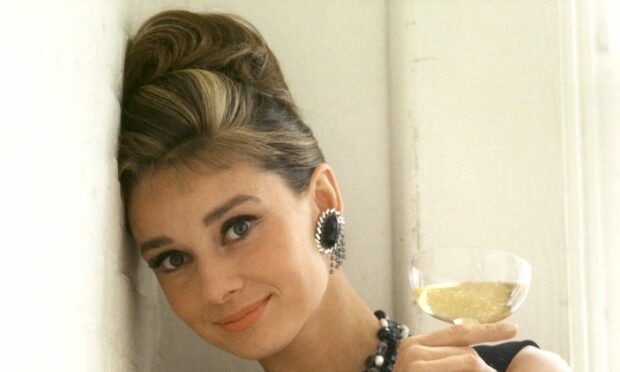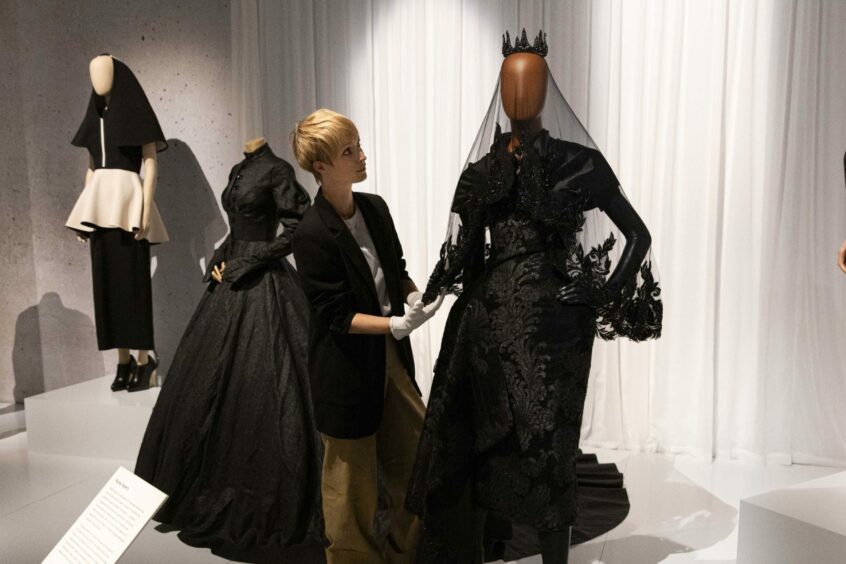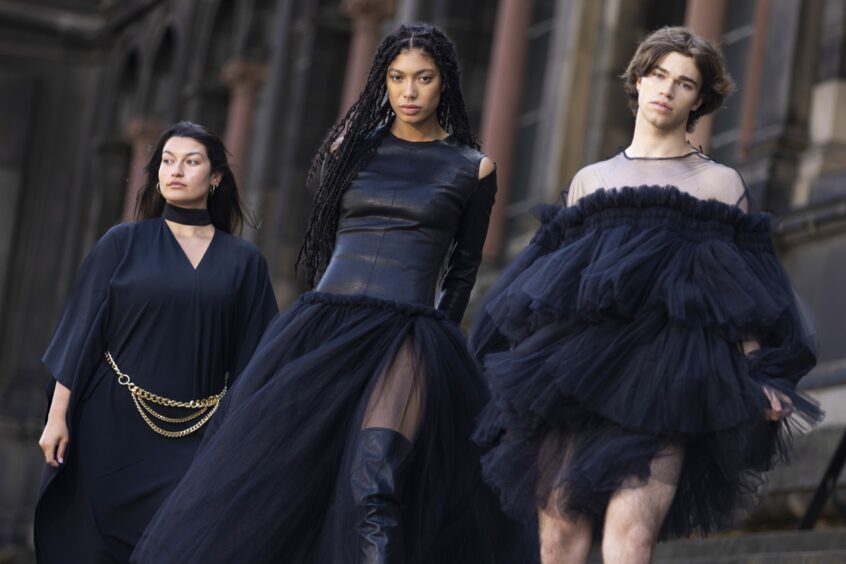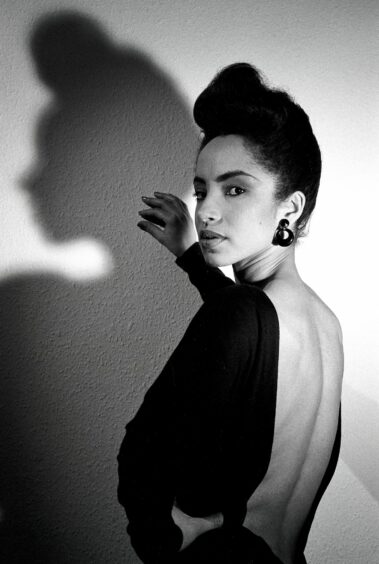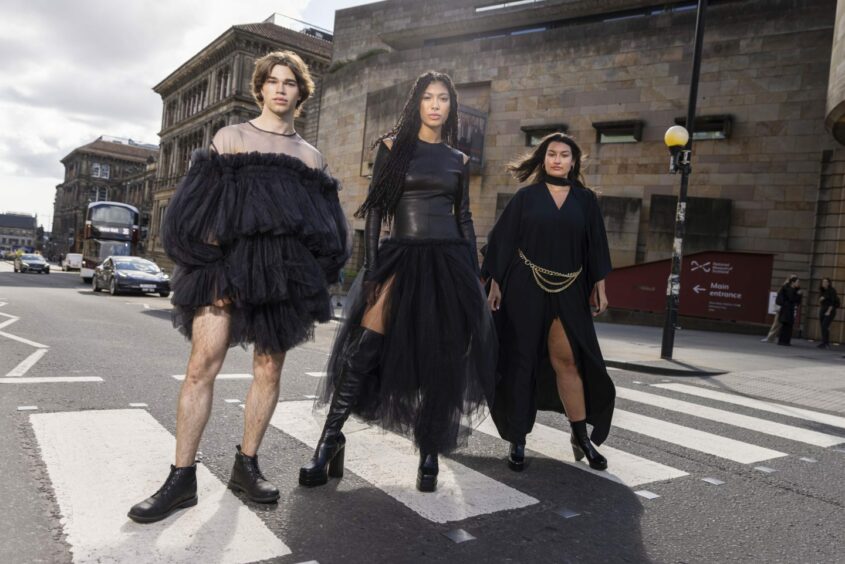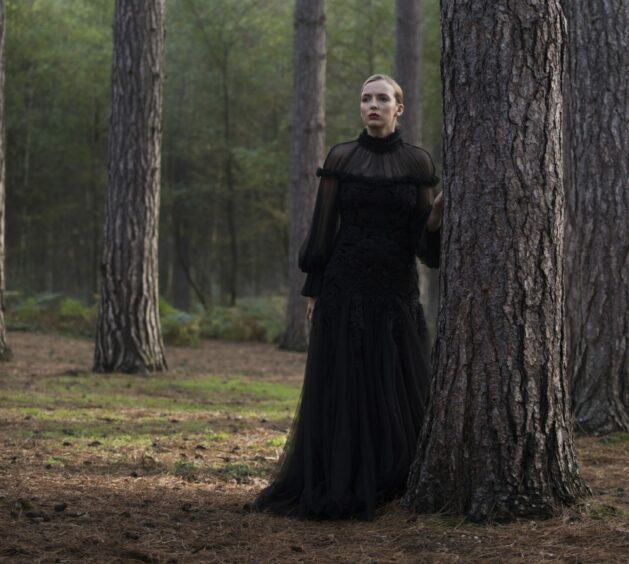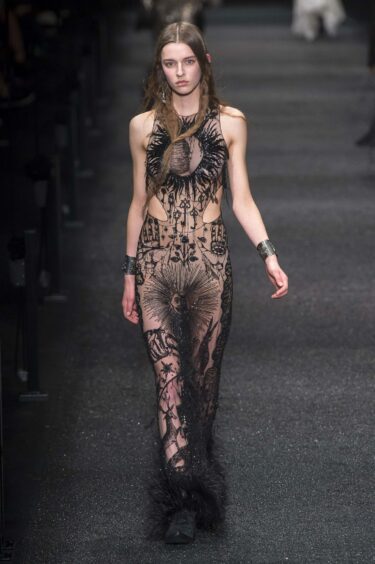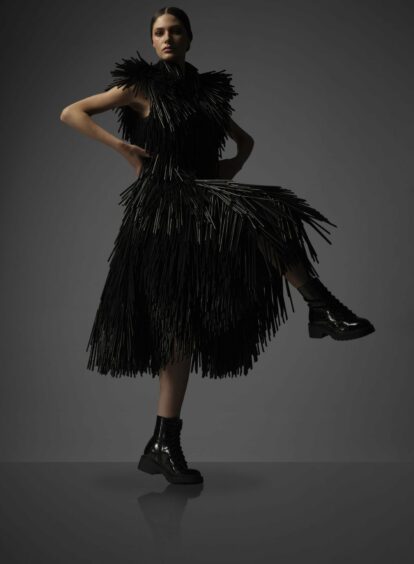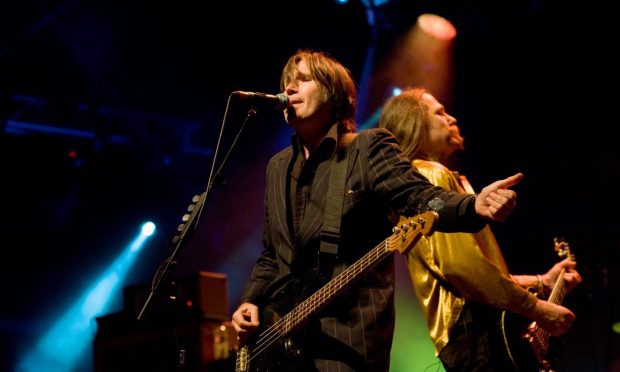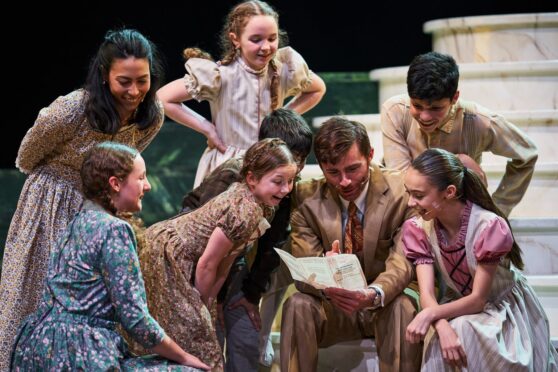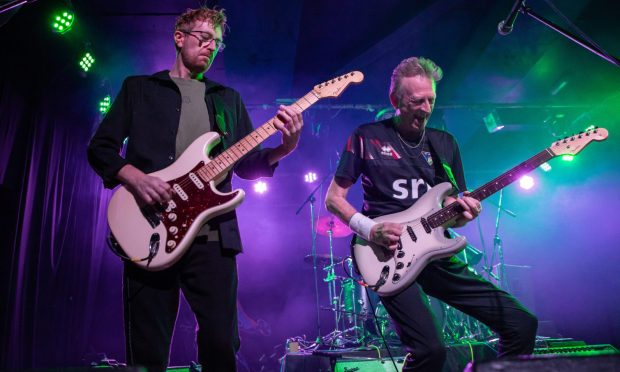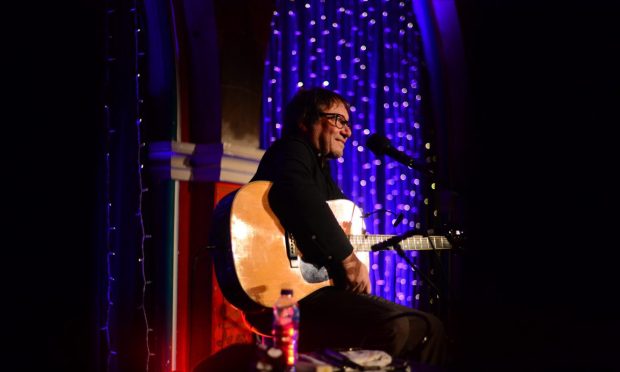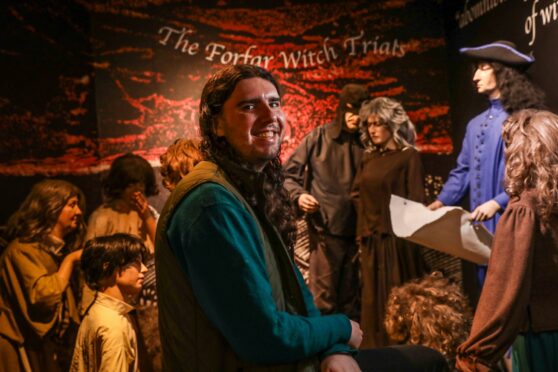From Audrey Hepburn in Breakfast at Tiffany’s to Anne Hathaway in The Devil Wears Prada, the little black dress has been seared into popular culture for almost a century.
But how did black attire go from a symbol of Victorian mourning, to the one garment that every woman should have in her wardrobe?
A new exhibition at the National Museum of Scotland is deconstructing the little black dress, examining the radical power of the colour black in fashion.
What does the exhibition include?
From design classics to cutting-edge catwalk creations, Beyond the Little Black Dress, which opened on July 1 and runs until October 29, brings together more than 60 striking looks from collections and designers around the world.
The biggest ever fashion exhibition held at the National Museum of Scotland explores how its complexities have made the little black dress simultaneously expressive of piety and perversion, respect and rebellion.
Its form ranges from the well-mannered cocktail attire of the early 20th century to the leather and latex worn by members of punk and fetish subcultures.
Origins of the Little Black Dress
Georgina Ripley is principal curator of modern and contemporary design at the National Museum of Scotland.
She’s also the lead curator for the exhibition.
She explained that when Coco Chanel designed a simple, short black dress in 1926, it was considered radically modern.
It disregarded convention entirely in both the stark design and sombre shade that had traditionally been associated with mourning.
At the time, it was hailed by US Vogue as “the frock that all the world will wear”.
It became a wardrobe staple, a symbol of femininity and a byword for chic, with each new silhouette capturing the spirit of its time.
However, there’s a “mythology” that Coco Chanel’s 1926 creation was the start.
Before Coco Chanel
“There were plenty of little black dresses made before 1926,” said Georgina, a history graduate, who did a masters in history of dress at the Courtauld Institute of Art in London.
“Coco Chanel herself had made others in the ‘20s.
“Black itself was already in fashion.
“In fact black had become a fashionable colour centuries before.
“But there is a real shift that happens particularly towards the end of the 19th century.”
Georgina said that black is a very difficult colour to achieve in terms of dying.
It used to be associated with the wealthy.
However, developments that happened in the 19th century made it much more affordable.
There was also a bigger change happening at the time in women’s fashion.
Impact of changes in society
“If you think about what happens with industrialisation and the ability for people to own black clothing – this sort of modernisation is happening at the turn of the century,” she said.
“And then of course it’s accelerated by the First World War and more women entering the workforce.
“There’s these shifting gender roles and this greater participation of women in society.
“The creation of the little black dress correlates with a sense of freeing women from the wearing of corsets.
“It’s designed to be more comfortable and more practical for this greater participation in life.
“You’ve got that happening alongside this introduction of black being much more at the forefront of fashion.”
Georgina said being minimal also tied in with the modernist art movement.
For the personality, character and image of a designer like Chanel to come along at that time, it created a “perfect storm” for her to help spearhead a transformation of both lifestyle and fashion.
“American Vogue picked up this moment,” she added.
“And I think what’s really important is that they compared it to Henry Ford’s Model T motor car.
“It’s supposed to show this democratisation of fashion and this idea of mass production, and this real term sense of modernisation of women’s dress.”
What’s the significance of the Little Black Dress in 2023?
Today, the little black dress remains a blank canvas for broader political and cultural shifts.
It can challenge social norms around race, gender and sexuality to reflect evolving ideals of beauty and identity, proving its infinite capacity for reinvention.
Not limited to women nowadays, the exhibition features dresses worn by notable figures.
These range from Wallis Simpson to Jonathan Van Ness as well as important milestone pieces from the history of fashion like an Yves Saint Laurent Le Smoking tuxedo, as well as a very rare example of the 1926 Chanel dress itself.
There are also contemporary pieces by Scottish fashion designers including Christopher Kane, Judy R. Clark and Charles Jeffrey.
Who are the top icons?
Georgina says there are key moments in history that have helped form an image of the little black dress in the popular imagination.
Examples she gives include the instantly recognisable iconic dress worn by Audrey Hepburn in Breakfast at Tiffany’s or the so-called ‘revenge dress’ worn by Princess Diana in 1994.
Last month, British Vogue released an article on the top 10 black dresses from film history.
But the iconography of the little black dress spans many genres.
“They are almost like burnt into our minds,” said Georgina.
“We can all picture Audrey Hepburn in Breakfast at Tiffany’s.
“But what I think is important is to give people those cultural touchstones.
“We have some really classic designers like Christian Dior, Coco Chanel, Yves Saint Laurent.
“We also have pieces by designers like Jean Muir.
“There’s a certain section of our audience who might remember having a Jean Muir or wanting to have a Jean Muir.
“But we do also have pieces that have been worn by famous people.
“In a section we call Designing in Black, we look at that relationship that happens as well between the designer and their muse and how a designer can almost create a moment for a celebrity, but also the celebrity creates a moment for the designer.
“There’s that synergy between them.
“That has helped also to catapult the little black dress into this kind of star status that it has.”
Are there other examples?
Other stand out examples featured include a dress worn by Princess Margaret made for her by Normand Hartnell.
There’s a piece worn by Jodie Comer as the assassin Villanelle in the TV series Killing Eve.
They’ve also got a dress that was designed for the musician Sade.
Georgina adds that there’s a very niche example of a piece worn by musician Jonathan Melton who went by the name of Jonny Slut.
He was big in the Goth club nights in London in the ‘80s.
“For a certain set of our audience, they’ll be very familiar with Batcave, which was the first night club where he was in the house band,” she said.
“And then he set up his own club night called Nag Nag Nag.
“There’s a really big influence of music on the punk movement and on the Goth movement and that’s so closely related to the little black dress.
“And then of course to have those classic pieces worn by royals.
“We have a dress by Armani, selected by Meghan Markle, that she wore for her interview with Oprah.
“There’s various pieces around the room that people can relate to who wore it or will recognise immediately that dress from that particular moment in history.”
Overview of the exhibition
Visitors to Beyond the Little Black Dress, which is sponsored by Baillie Gifford Investment Managers, will discover a century of fashion in a series of themed, immersive displays.
As well as iconic early pieces by Yves Saint Laurent, Dior and Jean Muir, they are juxtaposed with recent looks by ground-breaking contemporary designers and brands like Gareth Pugh, Simone Rocha and Off-White.
Areas of the exhibition are dedicated to highlighting black British designers whose work explores both blackness in terms of identity and the role the colour black plays in crafting a futuristic, sci-fi aesthetic.
Elsewhere, the exhibition considers how perceptions of the colour black differ in a global context, as well as how the intervention of smart technologies are establishing a blueprint for a more sustainable future.
National Museums Scotland’s internationally significant fashion and textiles collection comprises around 50,000 objects and is one of the largest in the UK.
The collection includes textiles dating back to the 14th century and clothing and accessories dating from the 16th century to the present day.
Beyond the Little Black Dress follows the acclaimed exhibition Body Beautiful: Diversity on the Catwalk.
Georgina Ripley is joined by guest curator Dr Sequoia Barnes, and Carys Wilkins, assistant curator modern and contemporary design at National Museums Scotland.
The accompanying book Little Black Dress: A Radical Fashion edited by Georgina Ripley, £30.00, is published by NMS Enterprises Ltd – Publishing.
How to see Beyond the Little Black Dress
Beyond the Little Black Dress, runs until October 29, Special Exhibition Gallery, Level 3, National Museum of Scotland, Chambers Street, Edinburgh.
To book tickets go to my.nms.ac.uk/events?k=BLBD&_ga=2.75715605.1693753567.1688385244-1939683416.1688385244
